Implementation of the Weighted Product Method for Recommendations Halal Dinning Places in Bali
on
p-ISSN: 2301-5373
e-ISSN: 2654-5101
Jurnal Elektronik Ilmu Komputer Udayana
Volume 11, No 3. February 2023
Implementation of the Weighted Product Method for Recommendations Halal Dinning Places in Bali
Sandia1, Ida Bagus Made Mahendraa2, Agus Muliantara a3, I Ketut Gede Suhartana a4, I Wayan Santiyasa a5, Luh Arida Ayu Rahning Putri a6
aProgram Studi Informatika, Universitas Udayana
Denpasar, Indonesia
Abstract
The growing tourism industry in Bali must be responded to by improving service facilities for tourists, so that Bali remains popular with many people. Including providing facilities to show the location of halal dinning places according to the criteria required by the user. Also considering that current technological developments can be easily accessed by many people, for some of these reasons the authors in this study intend to create an information system by implementing the weighted product method in order to provide recommendations for halal places to eat according to the criteria required by users. The results of this study are a recommendation system for halal places to eat in Bali on website and mobile platforms, with a recommendation accuracy of 90% based on the results of accuracy testing and error values.
Keywords: Information System, Halal Dinning Places, Weighted Product, Recommendation System
Awareness of the importance of creating comfort and convenience for tourists and local residents in Bali, especially in choosing culinary products. It must be realized by innovation and creation in the culinary field, so that the culinary field can become one of the fields that encourage many tourist visits, because culinary has its own charm to be enjoyed. The number of restaurants, angkringan, stalls and shops that provide food for customers in the Bali area makes buyers have many choices and their own goals. However, it is often found that Muslim tourists visiting Bali are still confused and wondering whether the places to eat really provide halal-guaranteed culinary products.
On the one hand, the level of awareness of culinary business actors on the importance of certifying culinary products using halal labels is not yet so high, whereas on the other hand the government is actively campaigning for the huge potential of halal tourism in tourist destinations throughout Indonesia, including in Bali. The government realizes the importance of improving the performance of tourism services in various fields, including in the field of culinary tourism. The government's attention to the development of halal tourism requires culinary business actors to increase product penetration by following standardization rules through product certification. So through this system, it can be used to educate the public to have an awareness of the importance of halal certification and culinary business actors.
So that this system is expected to be a means of promotion for halal food businesses in Bali, as well as responding to public concerns regarding the concept of halal tourism development, so this system can be an easy alternative to be accepted and understood by the public. So with some of the reasons above, the author decided to build a system that can provide recommendations and can help consumers choose a place to provide halal culinary products according to the required criteria. It is hoped that this system will be integrated with the recommendation system and also implement other relevant technologies to be applied in overcoming this problem.
In this study, the authors chose to use the weighted product method as the main method in providing recommendations for halal dining places in Bali. The weighted product method was chosen because it can make good recommendations on multiple criteria in accordance with the needs of the system to be made, as evidenced by the results of previous studies that served as a guide in this study. The implementation of this method is done by using dart programming on a mobile application.
The recommended steps for determining halal dinning places using the WP method are:
-
a. The assessment criteria used as a reference are:
-
1. Price
-
2. Distance
-
3. Operation Time
-
b. Determination of initial value, normalization with: W = -
, 1 ∑Wj
Information:
W : weight criteria j : criteria
-
c. Then the vector calculation process s is calculated based on the equation:
Information:
S : Alternative preferences are analogous to
vektor S
X : Criteria value
W : weight of criteria /sub-criteria
i : Alternative
j : criteria
n : many criteria
-
d. After the vector s value is obtained, the next step is to add up all vector s to calculate vector v.
the calculation is as follows:
Information:
-
V: Alternative preferences are analogous to vector V
X: Criteria value
-
W: weight of criteria/sub-criteria i : Alternative
j : Criteria n : many criteria
* : the number of citeria that have been assessed on the vector S
fl* rata_hargas
-
9 id: int(11)
∣j nama : varchar(255)
Ei nilai; varchar(255)
w bobot: int(11)
0 created_at; timestamp
0 upda'ed at: timestamp
U ∣ jam-bukas
⅛ id ! int(11)
: nama : varchar(255)
S nilai: varchar{255)
u bobot: iπt(11)
S created at: timestamp
S Updated at: timestamp
Il image_makanans
j id : int(11)
C name: varchar(255)
h resto id : int(11)
S created at: timestamp
0 updated_at; timestamp
Qo Kunjungans
j id; int(11)
# restoJd: int{11)
τ created_at: timestamp
τ updated at: timestamp
UJ: users
9 id : iπt(11)
j name: varchar(255)
d email: varchar(255)
no_te Iephone: varchar(255) password: text
N level: iπt(11)
B σeated at: timestamp
E updated at: timestamp
∏o haito_ba restos
j nama: varchar(255)
; alamat: varchar{255)
teip: varchar(255)
H ratahargaid: int(11)
M jenis hidangan id : int(11)
; jam buka : varchar(255> jam tutup : varchar(255) Iat: text long : text
^ situs: varchar(255) keterangan : text
= foto: text
v created at: timestamp
S Updated at: timestamp H userjd: int(11)

fl jenrs_hidangans
9 id : int(11)
•j nama; varcħarf255)
0 created at: timestamp
0 updated at: timestamp
Figure 1. Database schema
The implementation of the database is carried out in a SQL database environment, the SQL database has tables, column data types, and relations between tables. This system consists of 9 tables, namely:
-
a. jarak_users, to store location update data for each user.
-
b. jenis_restos, to store the type data of the place to eat.
-
c. rata_hargas, stores the average menu price data at the restaurant.
-
d. jam_bukas, to store information about the opening time of a place to eat.
-
e. image_makanans, to store photo data of places to eat and food menus.
-
f. kunjungans, to save the details of a visit to a place to eat
-
g. users, to store user data.
-
h. restos, to store detailed data on where to eat.
-
i. jenis_hidangans, to store data on the types of dishes available at the dining area.
3.2.
Interface Design
-
a. Admin Webpage
The web application is provided to perform actions as a user, in this case the admin and food service provider.
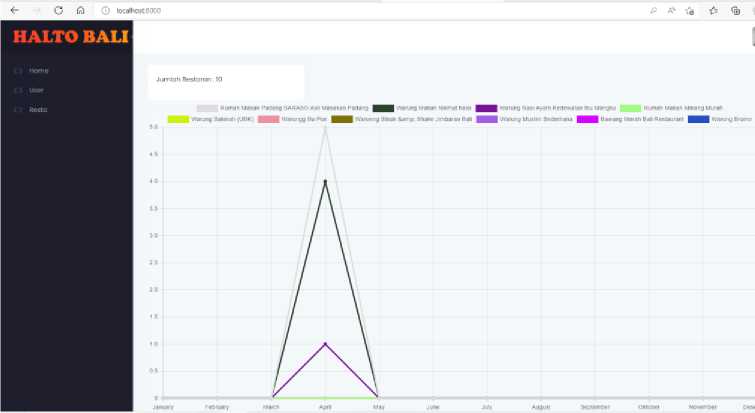
Figure 2. Dashboard
The main page after the admin and provider logs in, besides the main features seen on this page, a data card on the number of providers is presented and a graph of visits to a place to eat.
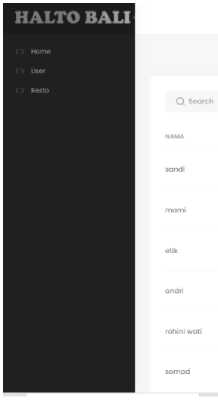
sannd9.jr@>g ma il .com
mo mi (gig moi Lc o<π
θtik(glgrτιaiLcoπι
QndriiggmoiLcom
rotiiniiggmaiLcom
007863528300
09507278723
81805585683
081803566779
083854340730
081918137679
Add User
ACTONS
Figure 3. User Page
Is a page to add new place provider data. Administrators can enter data through the available fields.
TElP LOGIN
ACTIONS
JI, Raya Uluwatu, Pasar Simpangan, Banfar Mekarsari, Jimbaran Bukit IOOM dari pompa bensin PolTEK unu□ ke arah swκ. Jlmbaran, Kec. Kuta Se!.. Kabupaten Badung, Bali 80361

waru∏gg Bu Pan
Warung Muslim Sederhana
081936103359
001317200400
Figure 4. Restos Page
Bαwαng Merah Ball Restauranl
Waroeng Sieak & shake Jimbaran
JI. Bypass Ngurah RaT No.75X. Jimbaran. Kec. Kuta Sel.. Kabupaien Badung, Bali 80361
JI, Raya Kampus Unud No.24, Jlmbaran, Kec. Kuta Sel., Kabupaten Badungl Bali 80361
Jl, Pertanlan no∣02 Jimbaran. κec. Kuia set, Kabupalen Badung. Bali 80361
i

This is a page to add data for a new place to eat. Administrators can enter data through the available fields.
-
b. Mobile User Page
The mobile page is provided specifically for users, in this case seekers of places to eat.


HALTO BALI

OOO
Figure 5. Splash Screen
Harga
15.000-30.000 ’
Jam Operasi
7jam-12jam ^
Jarak
1-2 KM ”
Search
OOO
Figure 6. Halaman Input Nilai Referensi
On the Splash Screen page there are 2 components, namely Image, Title Text. Image displays the logo of the application system, Title Text displays information on the name of the application, namely Halto Bali.
While on the input page the reference value is where the user enters the desired criteria to become the user's preference value. The preference value is sent to the server as a weight value in ranking using the weighted product method.
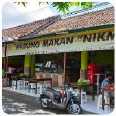
Warung Makan...
HIDANGAN WARUNG 08:00-21:00
Detail
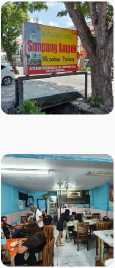
Rumah Makan M...
MASAKAN PADANG 00:00-00:00
Rumah Makan P...
MASAKAN PADANG 00:00-00:00
Detail
Detail
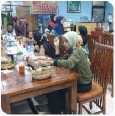
Rumah Makan P...
MASAKAN PADANG 09:00-09:00
Detail
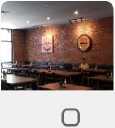
Figure 7. Recommendations list page
Waroeng Steak...
HIDANGAN RESTORAN 11:00-21:00

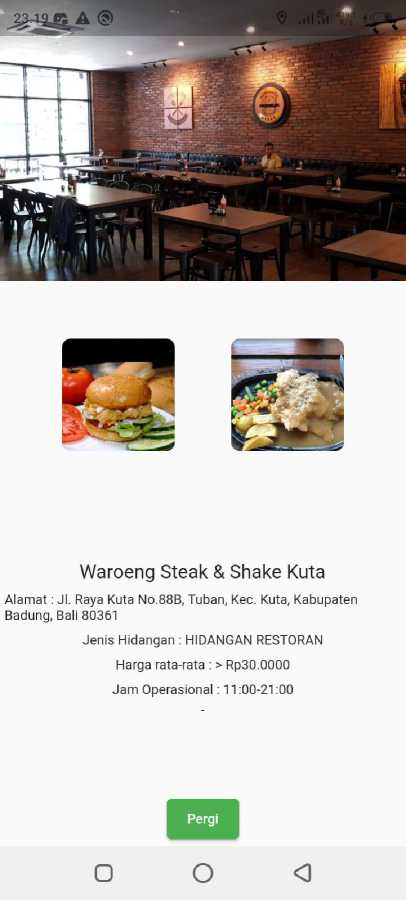
Figure 8. Details Page
The recommendation list page is a page to display the ranking results of alternative solutions that are processed from the weighted product method. Then the dining details page is a page that displays complete details of where to eat, such as the name of the place to eat, the type of place to eat, and complete information on the food menu.
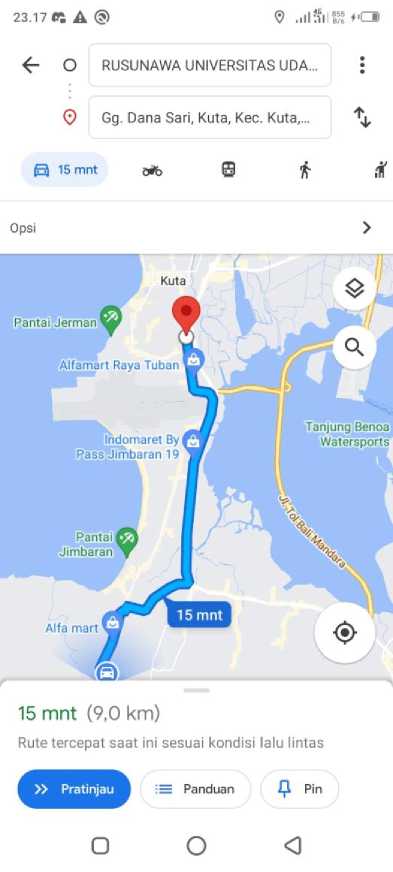
Figure 9. Dinning Place Route
This page is a page for displaying a map and route location from a place to eat. This page is equipped with a map as a geographical visualization of where to eat.
The tests carried out are in the form of validity testing using blackbox testing and accuracy testing.
-
a. Blackbox testing
Blackbox testing is carried out to check the functionality of the system, testing is carried out on web applications that are accessed by administrators and providers and mobile applications that are accessed by place seekers. The following is a blackbox test table on the system.
Table 1 Blackbox test results
|
Platform test |
Functional |
Identific ation |
Test Results |
|
Mobile |
Registration |
UM1 |
Valid |
|
Login |
UM2 |
Valid | |
|
Logout |
UM3 |
Valid |
|
input criteria |
UM4 |
Valid | |
|
input dinning place data |
UM5 |
Valid | |
|
Input alternative data |
UM6 |
Valid | |
|
Search for dinning place |
UM7 |
Valid | |
|
Detile for dinning place |
UM8 |
Valid | |
|
Recommended the dinning place |
UM9 |
Valid | |
|
The location of the dinning place |
UM10 |
Unvalid | |
-
b. Accuracy Testing
System accuracy testing is done by comparing the ranking results performed by the system with the ranking results with real data or existing data. The test was carried out at the location of Rusunawa, Udayana Campus, Street Udayana Campus Jimbaran, Kec. Kuta Sel., Badung Regency, Bali 80361, Indonesia with latitude: -8.7981624 and longitude: 115.1617221. With detailed criteria as follows:
-
1. Distance
-
a. <=1 km = near
-
b. 1-2 km = medium
-
c. > 2 km = far
-
2. Price
-
a. <15.000 = cheap
-
b. 15.000-30.000 = medium
-
c. >30.0000 = expensive
-
3. Opration Time
-
a. 12jam -24 jam = very long
-
b. 7 jam-11 jam = long
-
c. <7 jam = short
Tested on 50 data. Based on the trials that have been carried out and making comparisons, of course there are some differences. The difference or error will be calculated the error value. To calculate the accuracy as follows:
Appropriate amount of data = 45
Incorrect amount of data = 5
appropriate amount of data Accuracy =-----------------------× 100%
amount of test data
45
= — × 100% = 90%
incorrect amount of data
Error =---------------------× 100%
amount of test data
5
= — × 100% = 10%
Calculation of the accuracy test obtained the appropriate results as many as 45 alternatives and 5 alternatives that were not suitable. Thus the level of accuracy obtained from the WP.
From the results of the trials and discussions conducted, the following conclusions can be drawn:
-
a. The system created can apply calculations with the WP method. The application of the WP method on an android-based application produces accurate calculations after being tested with system calculations and real data calculations.
-
b. The system calculation using the WP method shows an accuracy rate of 90%, so the results are in the good category.
References
-
[1] Khairina, D.M., Ivando, D., Maharani, S, “Implementasi Metode Weighted Product Untuk Aplikasi Pemilihan Smartphone Android”, Jurnal Infotel, Vol. 8. 2016.
-
[2] McGinty, L., Smyth, B. “Adaptive selection: analysis ofcritiquing and preference based feed back in conversation on recommender system”, International J Electron Commerce. 2006
-
[3] Sucipto, “Analisa hasil rekomendasi pembimbing menggunakan multi-attribute Dengan metode weighted product”, Fountain of Informatics Journal, Vol.2. 2017
-
[4] Darmaja, “Rancang Bangun Sistem Rekomendasi Warung Makanan Khas Bali Menggunakan Metode Collaborative Filtering Berbasis Mobile”. Jimbaran: Ilmu Komputer, UNUD, 2016.
-
[5] Pandean, S.S., Hansun, S, “Aplikasi Web Untuk Rekomendasi Restoran Menggunakan Weighted Product”, Jurnal Teknologi Informasi dan Ilmu Komputer, Vol.5. 2018
-
[6] Connolly, T., & Begg, C. Database Systems: a Practical Approach to Design, Implementation, and Management. 5th Edition. America: Pearson Education. 2010.
572
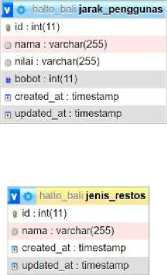
Discussion and feedback